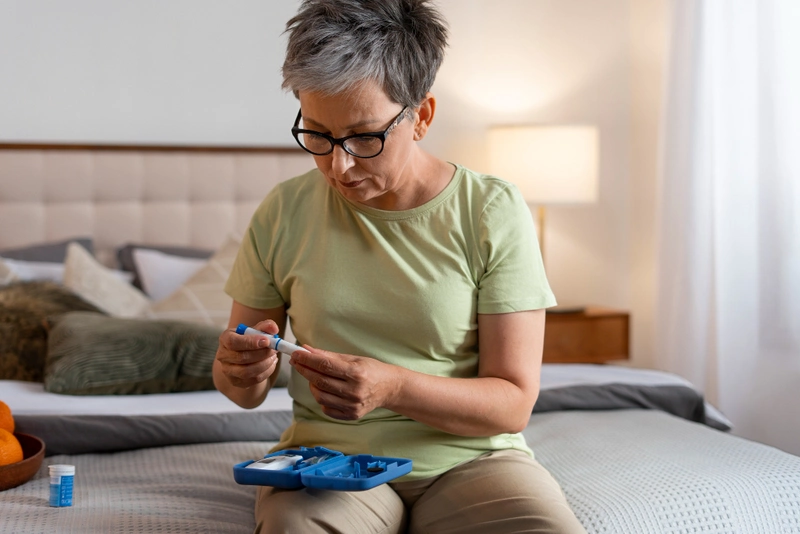- Published on: Jun 06, 2025
- 3 minute read
- By: Secondmedic Expert
Excessive Spice Consumption And Stomach Health: What You Need To Know
Spices are an essential part of Indian cooking. From turmeric and cumin to red chili powder and garam masala, spices add color, flavor, and aroma to our meals. Many spices even offer health benefits when used in moderation. However, like everything in life, too much of a good thing can turn harmful.
In this blog, we will discuss the impact of excessive spice consumption on stomach health, the symptoms of spice-induced digestive problems, and how to keep your gut happy and healthy.
Why Do We Love Spicy Food?
Spicy food is popular not just for its taste but also for how it makes us feel. Eating spicy food releases endorphins, the body’s natural painkillers, which give a slight “high.” It can also make us feel warm, especially during cold or rainy days. Spices like chili contain capsaicin, which is responsible for the heat. While capsaicin offers some health benefits like boosting metabolism and reducing inflammation, too much of it can irritate the stomach lining.
How Excessive Spices Affect Stomach Health
Let’s look at how too much spice can harm your digestive system:
1. Acidity and Heartburn
One of the most common side effects of spicy food is acidity. Excess spices stimulate acid production in the stomach. When this acid moves upward into the food pipe (esophagus), it causes heartburn and discomfort. Over time, it can lead to conditions like acid reflux or gastroesophageal reflux disease (GERD).
2. Gastric Ulcers
Capsaicin may irritate the stomach lining when consumed in large quantities. This can lead to the development of small sores known as gastric ulcers. Symptoms include sharp abdominal pain, bloating, and nausea. In some severe cases, ulcers can bleed and require medical attention.
3. Digestive Disturbances
Overconsumption of spicy food can disturb the normal digestion process. People may experience gas, bloating, diarrhea, or constipation. This happens because spicy food speeds up the movement of food through the gut, leaving less time for proper absorption.
4. Irritable Bowel Syndrome (IBS) Triggers
For those already suffering from IBS, spices can be a major trigger. Even a small amount of chili can lead to cramping, urgency, and bowel discomfort. Doctors often advise IBS patients to limit or avoid spicy foods altogether.
5. Loss of Appetite or Taste
Too much spice can numb your taste buds temporarily, making food less enjoyable. Frequent irritation of the stomach lining may also lead to nausea, vomiting, and a reduced appetite over time.
Signs That You’re Overdoing the Spice
Here are some signs that indicate your stomach is not handling the spice well:
-
Burning sensation in the chest or throat
-
Frequent burping or belching
-
Stomach pain after meals
-
Loose motions or irregular bowel movements
-
Sour taste in mouth, especially when lying down
-
Loss of appetite
-
Constant bloating or gas
Tips to Protect Your Stomach While Enjoying Spices
If you love spicy food but want to avoid stomach issues, follow these simple tips:
1. Balance Your Meal
Add yogurt, milk, or ghee to balance spicy dishes. Dairy helps neutralize the heat and soothes the stomach lining.
2. Cook With Digestive-Friendly Spices
Not all spices are harmful. Use cumin, fennel, and turmeric for flavor and digestion support. Avoid overusing red chili powder or black pepper.
3. Hydrate Well
Drink enough water throughout the day. It helps flush out excess acid and keeps the digestive system smooth.
4. Eat Mindfully
Don’t rush meals. Chew slowly and eat in a calm environment. Avoid lying down immediately after eating.
5. Know Your Tolerance
Each body reacts differently to spices. Understand your limit and reduce spice levels if you start noticing discomfort.
Best Tests to Monitor Your Stomach Health
If you frequently face digestive problems, it’s best to get tested. Here are some suitable tests from www.secondmedic.com powered by Thyrocare:
-
Complete Health Check-Up
For an overall view of your body functions including liver and stomach health.
-
H. Pylori Antibody Test
Checks for bacterial infection that causes ulcers.
-
Liver Function Test (LFT)
To monitor the impact of diet and spice on liver-related digestive enzymes.
-
Stool Routine & Microscopy
Helpful in detecting infections or digestive issues.
-
Vitamin B12 & D Tests
Spicy diets sometimes interfere with nutrient absorption.
Conclusion
Spices bring life to our food, but balance is key. While they offer health perks in small amounts, overindulgence can take a toll on your digestive system. By being mindful of what and how much you eat, you can enjoy flavorful meals without putting your stomach at risk.
If you're experiencing discomfort, it's time to listen to your gut and take a break from the heat. Take charge of your digestive health today and consult a doctor or get tested if needed.
Start your wellness journey by understanding the link between Excessive Spice Consumption and Stomach Health—because your stomach deserves better!
Read FAQs
A. Not always. In moderation, spices can aid digestion and metabolism. Issues arise when spices are consumed excessively or too frequently.
A. Kids have more sensitive stomachs. It’s best to introduce mild spices gradually and avoid hot chilies.
A. Yes, drinking cold milk, coconut water, or chewing fennel seeds can help reduce acidity.
A. It varies, but with a mild diet, proper hydration, and rest, it may take a few days to weeks.
A. No, just reduce the quantity of irritant spices like chili. You can continue consuming soothing spices like fennel and cumin.
Our Services
Request A Callback
Recent Posts
How to Detect and Manage Early Diabetes at Home
Aug 12,2025
What Is Covered in Employee Wellness Plans?
Aug 11,2025
Top 5 Lab Tests You Can Book from Home in India
Aug 07,2025
Is Curd Good or Bad for Acidity?
Aug 02,2025
Can Fatty Liver Be Reversed Completely?
Jul 31,2025










